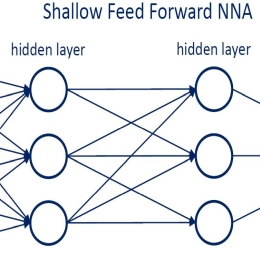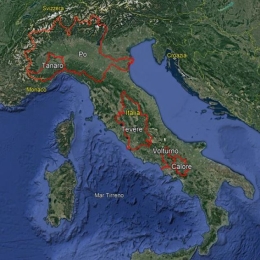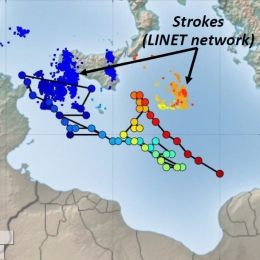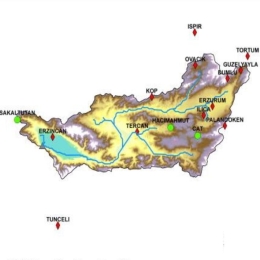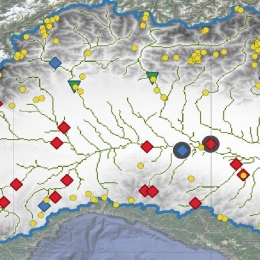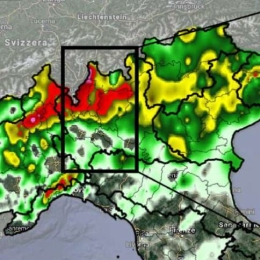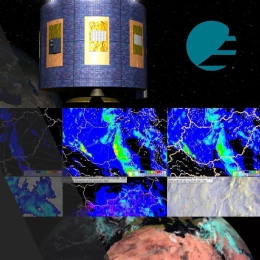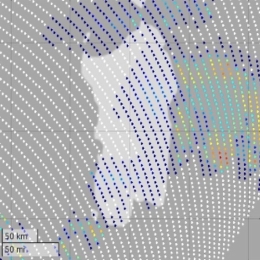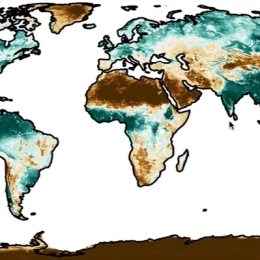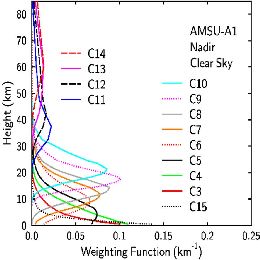Weather
Daniele Casella presents a new algorithm for the Micro-Wave Sounder (MWS) radiometer on board the EPS Second Generation satellites.
The development of precipitation retrieval techniques can now benefit from the availability of unique cloud and precipitation observations by the two space borne radars currently available: the Dualfrequency Precipitation Radar (DPR) on board the NASA/JAXA GPM Core Observatory, and the NASA CloudSat Cloud Profiling Radar (CPR). These two radars have demonstrated their complementarity in the monitoring of precipitation. While DPR has shown a high accuracy in the estimate of medium and intense precipitation regimes, CPR has proven to be very suitable for the retrieval of light rain and snowfall. Within the H SAF a new algorithm for the Micro-Wave Sounder (MWS) radiometer on board the EPS Second Generation satellites (MetOp-SG) has been developed. Different machine learning approaches were tested in order to select the most suitable for optimizing the performance of the algorithm for the detection (a classification problem) and estimate (a regression problem) of rainfall and snowfall.
The details concerning the coincidence datasets creation, the design of the ML modules and the algorithm input selection procedure will be presented, together with results of the algorithm's performance.
Annalina Lombardi demonstrates that that areal precipitation estimation including satellite information in addition to surface observations has a high performance compared to that which uses only the rain gauge data.
Satellite-based remote sensing provides a significant contribution for hydrological predictions due to its wide coverage and increasing tempo-spatial resolutions. Although current observed areal precipitation estimation is mainly based on point rain gauge measurement interpolation, the ability to deduce spatially distributed data from point measurement depends on the design and density of the sensor network.
A possible approach to have a correct representation of the rain field at the hydrological scale (up to a few hundred meters) could be to merge rain gauge data with gridded rainfall data obtained from remote sensing techniques, and the availability of such data in near-real time is a unique opportunity for the operational hydrology community. In this study we propose the application of advanced downscaling techniques based on Cellular Automata Algorithm for rainfall spatialisation using satellite precipitation products for hydrological applications. The method proposed to merge rainfall estimates measured in different spatial scales is based on the data assimilation concepts with particular emphasis on the transformation of point data to areal data. The work wants to prove that the areal precipitation estimation including satellite information in addition to surface observations has a high performance compared to that which uses only the rain gauge data.
Leo Pio D'Adderio analyses the performances of the H SAF precipitation products during the Mediterranean cyclone Apollo.
This work analyses the performances of the H SAF precipitation products during the Mediterranean cyclone Apollo. The cyclone Apollo occurred between October 25th and October 29th, 2021 with its maximum on October 28th and 29th when it approached the coasts of Sicily causing floods and damages to civil structures. The present work aims to describe the cyclone evolution by exploiting the satellite-based Level 2 and Level 3 H SAF precipitation products. The analysis focuses on the reconstruction of the precipitation pattern and of the quantitative amount thanks a direct comparison with ground-based measurements.
Aynur Sensoy assesses the impact of the snow product for runoff prediction results (KGE> 0.85) and also demonstrates it in comparison to a well-known data set of MODIS.
Developing satellite technology offers new products to simulate different hydrological processes. These products are invaluable in hydrological applications for mountainous areas where observation data is relatively limited. The H SAF project offers snow products over complex topographies.
The daily snow cover dataset derived by H SAF SE-E-SEVIRI (H10) is evaluated on the mountainous terrain of the Upper Euphrates Basin. Snow-covered area data is processed and analyzed. Snow depletion curves are extracted and used as basic forcing data in a conceptual model. The impact of the product is assessed by the model performance for runoff prediction results (KGE> 0.85) and also demonstrated in comparison to a well-known data set of MODIS.
Lorenzo Alfieri shows recent advances in high resolution satellite products and their use in hydrological modelling.
This work shows recent advances in high resolution satellite products and their use in hydrological modelling. In a set of experiments, the distributed hydrological model Continuum is set up for the Po River Basin and forced by satellite precipitation and evaporation, while soil moisture and snow water equivalent are ingested through a data-assimilation scheme. All satellite products produced skilful estimates of river discharge. Satellite based evaporation and snow water equivalent marginally improve (by 2% and 4%) the mean Kling-Gupta efficiency at 27 river gauges. Interestingly, a model calibration heavily relying on satellite data provides skilful reconstruction of river discharges, paving the way to full satellite driven hydrological applications.
Stefano Federico presents a study, a comprehensive analysis of the July 2021 event that occurred over Como Lake (Italy), trying to provide a complete overview of all the data currently available for the analysis of this type of events.
In recent years, in some areas over Europe, there has been an incidence of extreme weather events that have severely impacted people, structures, and infrastructure, causing damage and loss. The scientific literature indicates that the scenario is evolving and that there is an increasing number of severe weather events, which makes the use of as much data as possible particularly useful.
In this study, a comprehensive analysis of the July 2021 event that occurred over Como Lake (Italy) was performed, trying to provide a complete overview of all the data currently available for the analysis of this type of events.
Marco Petracca provides an overview of SEVIRI-based precipitation products: H60, H61, H63 and H90.
Over the past few years, there has been a rising in intense precipitation events, resulting in severe effects on people and infrastructures. To meet the challenge of analysing weather events comprehensively and globally, the use of information from satellite is playing an ever-increasing role in the field of meteorology. In this context, H SAF provides data sets and products for operational hydrological applications: an overview of SEVIRI-based products will be given: H60, H61, H63 and H90. Their validation process and a direct inter-comparison between the same products with different spatial coverage will be shown to demonstrate their extended spatial validity.
The session includes a summary of H SAF precipitation products, with particular attention to the most recent products.
The session includes a summary of H SAF precipitation products, with particular attention to the most recent products. The procedures to get access to the data, both for short range repository (last 60 days) and longtime archive data will be described. Moreover, the main data formats will be briefly presented, including the expected format changes in the near future. Python scripts and a Jupiter notebook developed for reading and visualization of precipitation data will be also presented.
Additionally, an example of Flood modelling with satellite rainfall data in Africa will be shown. Flood modelling over data scarce regions is challenging. Satellite rainfall data offer a viable tool to force hydrological models and provide discharge prediction at ungauged sites. However, being an indirect type of measurements, satellite rainfall observations can be subjected to significant bias and might be suboptimal over mountainous terrain. Here we show that model recalibration or bias correction even with a few rain gauges can provide boost hydrological model performance and thus make satellite rainfall data a valid solution to obtain discharge.
A demonstration session that gives an overview on how to download, read and visualize H SAF soil moisture data using the Python programming language.
The demonstration session gives an overview how to download, read and visualize H SAF soil moisture data using the Python programming language. Jupyter notebooks are used to present code examples, which are hosted at GitHub. H SAF Surface Soil Moisture (SSM) and Root-Zone Soil Moisture (RZSM) products are comprised of either Near Real-Time (NRT), Offline or Data Records (DR) products, which are freely available after user registration at the H SAF data portal. RZSM products are generated fromassimilating the ASCAT-derived surface SM in the ECMWF/H SAF land data assimilation system. Additionally, a hydrological exercise will highlight the added value of soil moisture satellite data for flood prediction. Soil moisture conditions have a great impact on the transformation of precipitation into runoff. A correct estimation of the initial soil moisture condition is a critical aspect for operational flood prediction. In the exercise we will test the sensitivity of flood response to initial soil moisture conditions using a simple hydrological model over an African Basin.
Regis Borde from Eumetsat explains in his presentation how winds are derived from polar orbiting satellites in the Arctic and Antarctic region.
Atmospheric Motion Vectors (AMVs) have been derived from geostationary satellites since late seventies. In 2001, an experimental polar wind product has been developed at the University of Wisconsin-Madison’s (CIMSS) using imagery from MODIS instrument on NASA’s Terra satellite. Filling the lack of observational data over Polar Regions this product demonstrated a global positive impact on the forecast not only over polar areas. Following the initial CIMSS developments, EUMETSAT recently started to extract polar winds from METOP AVHRR instrument. Regis Borde´s session will provide some general information about the current status of polar winds product and about its extraction. The general methodology to derive polar winds from satellite images is mainly based on the heritage used for geostationary satellites, but some specific problems had to be considered due to larger timeliness between consecutive images, to characteristics of the instruments and to specificities of polar areas atmosphere.
Ralf Bennartz from the University of Wisconsin gives an introduction on the principles of atmospheric soundings with AIRS and AMSU sensors.
High resolution infrared sounders, such as AIRS and IASI, and microwave sounders, such as AMSU, are a key element of the global satellite observing system and provide a wealth of data important for various operational applications including data assimilation and nowcasting applications. This presentation will revisit the physical basis of infrared and microwave sounding and provide an overview on the state-of-the-art of microwave and infrared soundings.
Nuno Moreira from IPMA guides you through the web sites mentioned in the presentations during the Polar Satellites Week.
In this session you will be taken on a website tour, visiting pages where polar satellite products referred during the whole EUMETRAIN Polar Satellite Week can be visualized. “Web-Visits” will naturally include EUMETSAT or NOAA pages and it will be an opportunity to make a wrap-up on the contents previously discussed...

